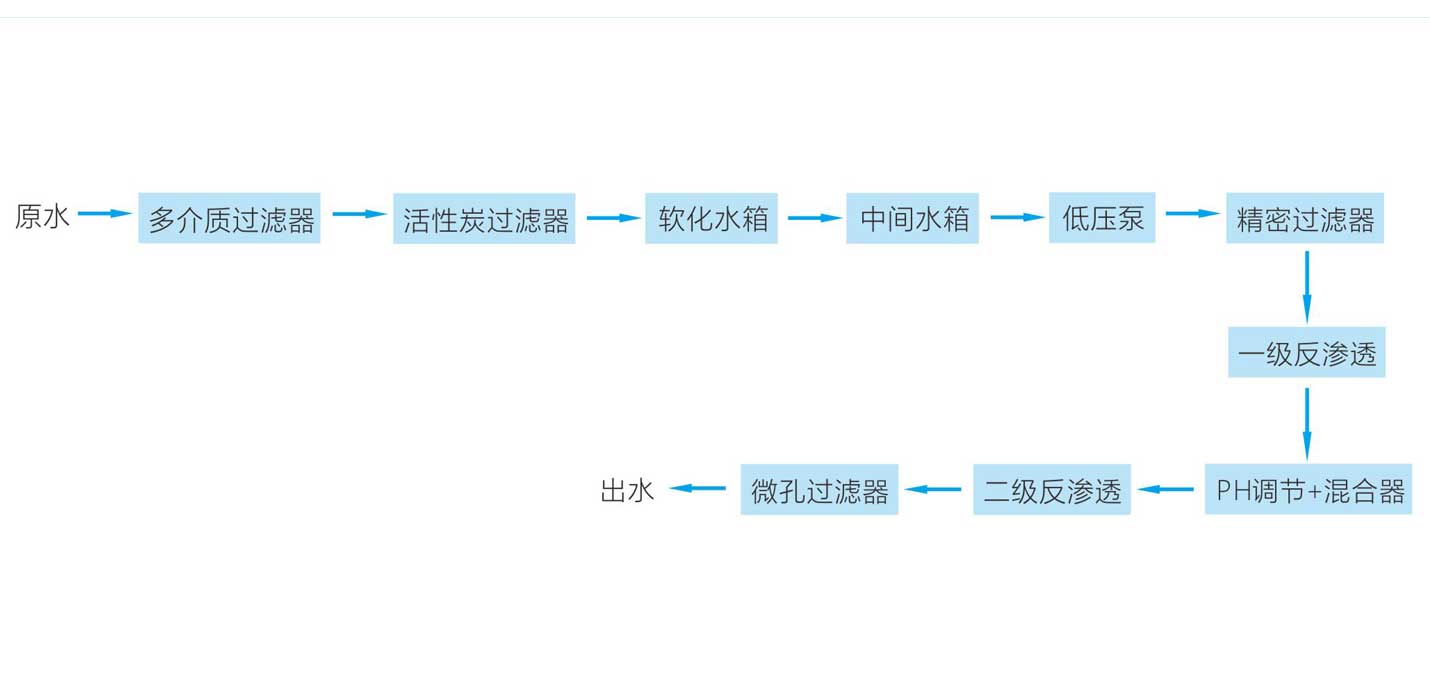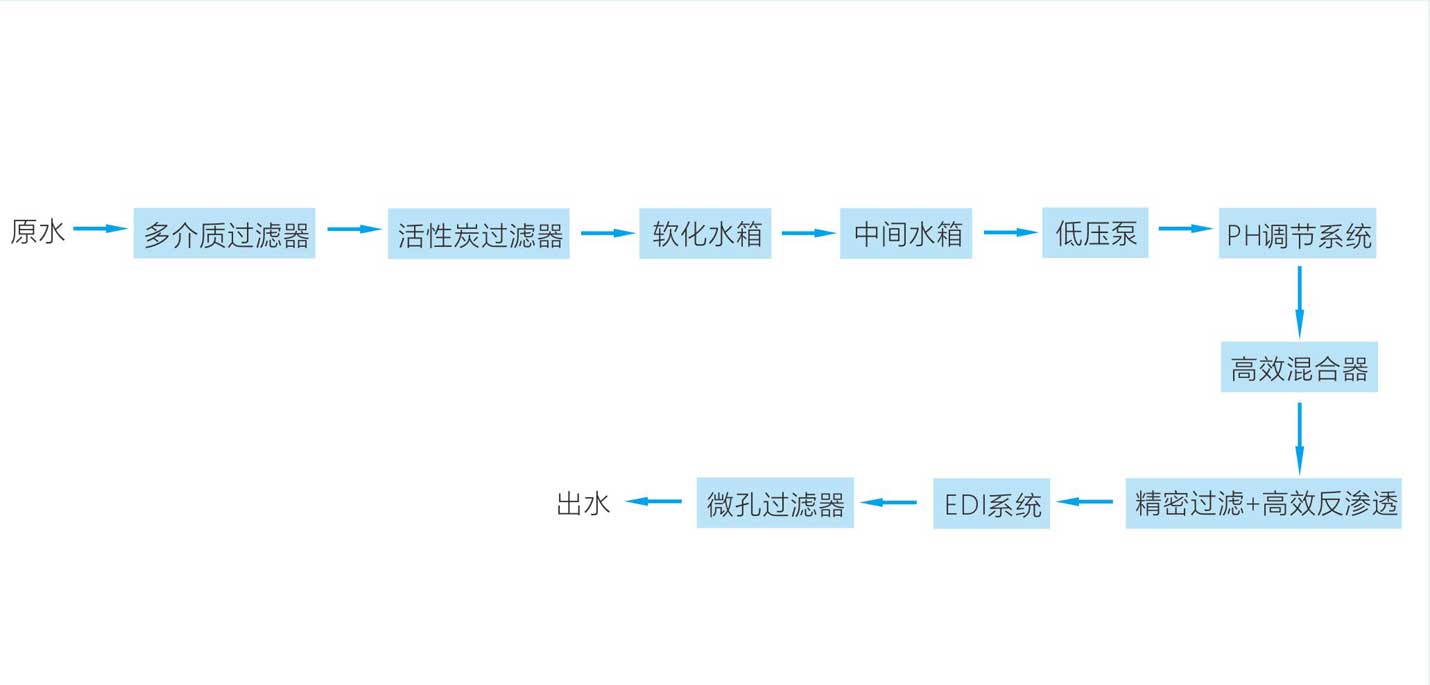
Online customer service for after-sales problems
Contact now
Provide project content that meets your needs
Apply Now
Submit your message
Collaborate now
 E-Mail:
dawatertreatment@gmail.com
E-Mail:
dawatertreatment@gmail.com
The ion exchange system is a traditional water treatment process in which various anions and cations in water are replaced by anion and cation exchange resins. Anion bed system and ion exchange mixed bed system, and mixed bed system is usually used to produce ultrapure water and high purity water after reverse osmosis and other water treatment processes. It is used to prepare ultrapure water and high purity water. one of the alternatives. The effluent conductivity can be lower than 0.2μS/cm, and the effluent resistivity can reach more than 5MΩ·cm. According to different water quality and usage requirements, the effluent resistivity can be controlled between 5~18MΩ·cm. It is widely used in the preparation of ultra-pure water and high-purity water for industrial and medical ultra-pure industries such as electronics, ion-exchange resin systems, boiler make-up water, etc.

第四种:前处理与第二种方法一样使用反渗透,只是后面使用的混床采用EDI连续除盐膜块代替,这样就不用酸碱再生树脂,而是用电再生。这就彻底使整个过程无污染了。但这这种方法的前期投资比较多,运行成本低。 其流程如下
